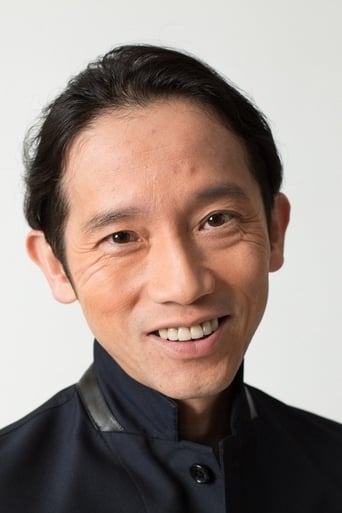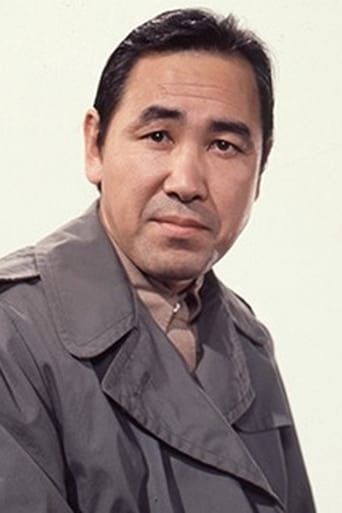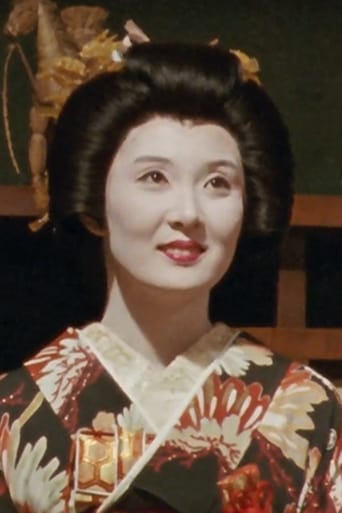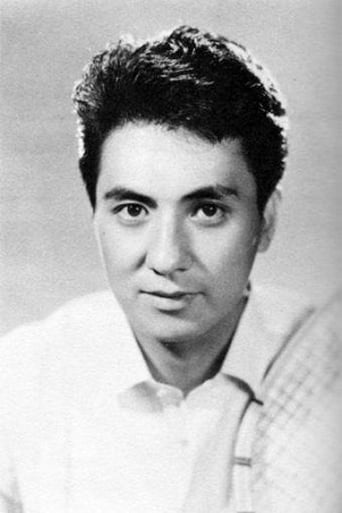Listonixio
Fresh and Exciting
Sexyloutak
Absolutely the worst movie.
Bob
This is one of the best movies I’ve seen in a very long time. You have to go and see this on the big screen.
Geraldine
The story, direction, characters, and writing/dialogue is akin to taking a tranquilizer shot to the neck, but everything else was so well done.
mevmijaumau
Just when you thought you've seen the weirdest stuff there is, you encounter Dogra Magra, an anti-chronological murder mystery surrealist mindf*ckery inexplicably named after an obscure Christian cult's chant for no apparent reason. Dogra Magra was adapted from the novel by Yumeno Kyusaku (this pen name means "The Person Who Always Dreams"), sometimes referred to as the Japanese H. P. Lovecraft. This is the final film directed by Toshio Matsumoto, a legendary underground film figure whose films were ground-breaking and revolutionary for their time, but sadly he's completely obscure outside of Japan.Dogra Magra is a story about a young man, Ichiro Kure, who wakes up in an asylum cell with no memory of who he is or how he got there. Two questionably sane doctors take competitive turns at studying his condition and making him even more confused than he previously was. They connect his problem to his Chinese ancestor who killed his wife and painted her decomposing body, and they believe Ichiro did the same with his bride on their wedding day. Ichiro is basically a metaphor for Japanese youth, or, more specifically, Japan itself. Both inherited cultural and historical heritage from China and both are faced with an identity crisis.One interesting thing about the narrative is that the film provides no context in the beginning as the audience is left just as clueless as Ichiro. With every new plot twist, every new revelation provided by the two doctors, the viewer grows more and more confused and starts wondering is there even a solution to this absurd puzzle. Most of the film is very talky and dialogue-driven with plenty of flashbacks, so you need to pay REALLY close attention to catch everything that's going on. The final scene, when Ichiro tries to escape from the asylum, is just bat-sh*t insane although fairly normal for Matsumoto's standards.Dogra Magra takes place in the 1920s and the movie is painted in nostalgic shades of green and yellow to accompany the Taisho era. However, the green/yellow tint is present only in "present-time" scenes, while the flashbacks and such are mostly colored in bright red or blue, and the color palette is always interesting. The flashbacks to Ichiro's Chinese ancestor are filmed with puppets and strange lighting. Throughout the film, images of Buddha, fetuses and a solar eclipse are used, for what reason, I do not know.My advice to people who want to watch it is that you pay close attention and don't let yourself get confused by the film because it's really easy to get so. Oh, and by the way, that poster is seriously strange.
chaos-rampant
A man is confined to a mental institution after trying to murder his fiancée. Two doctors relate his problem to an Asian philosophy that states that mental defects are transmitted from generation to generation. He learns that one of his distant ancestors murdered his wife as a way of demonstrating a point to his lord about the importance of love over the emptiness of lust and to drive home the point further, created a series of illustrations of the dead woman decaying which in turn trigger the memories of his distant descendant. But is the whole thing merely a game concocted by the two doctors, who may even have driven themselves mad in the process? The first half of the film is stunning. It relates an experience to a character who doesn't remember/know it. We're given mystery that haunts and unanswered questions, mentions to "the incident" and "the man who gave you the scroll", and the movie toys with "how much of this is real and how much of it made up or imagined or hallucinated?" questions. That the protagonist is an amnesiac who therefore can neither confirm nor deny anything makes us a carte blanche on which Toshio Matsumoto writes a mystery then constantly rewrites it, he goes back and erases details or changes them or adds new ones. Dr. Masaki died a month ago but then he shows up and we're told it was all a clever ploy of his rival doctor, Dr. Wakabayashi. Then Dr. Wakabayashi disappears and Dr. Masaki tells us that he's the fiend, the bad guy, the man behind the curtain.But the movie can be very talky when it showed us it can also be visually amazing, and there's a lot of theorizing and psychological mumbo jumbo that go nowhere because none of it helps the Dogura Magura that is about an insane young man viewing the world as though on a fractured mirror. A big part of the movie is like a game we're invited to observe without knowing the rules or like a jigsaw puzzle where the pieces are given to us one at a time. As such, the mystery is not for us to solve but rather watch it play out. To the extent that a mentally unstable protagonist who can't remember his past finds himself a pawn in the hands of his doctors the movie reminds me of a Shutter Island that is not a pastiche of 50's potboilers.But it's also a movie made by one of the most fiercely creative voices in Japanese cinema. Toshio Matsumoto made only three feature films but all of them are very different to each other and original in their own ways. In the end, the movie explodes into a frenzy of fiery red colors and papers swirling in the air and we get a Dadaist image of a clock broken then glued together askew and the protagonist crosses over to a bloody twilight zone where he sees/hallucinates himself, or his doppelganger, surrounded by dead bodies. Then we're back in the same room we were in the start and the boy wakes up again and how much of what we saw was a dream or the delirium of an insane mind that may be even partially real or the broken pieces of memory glued together askew it's impossible to tell.





